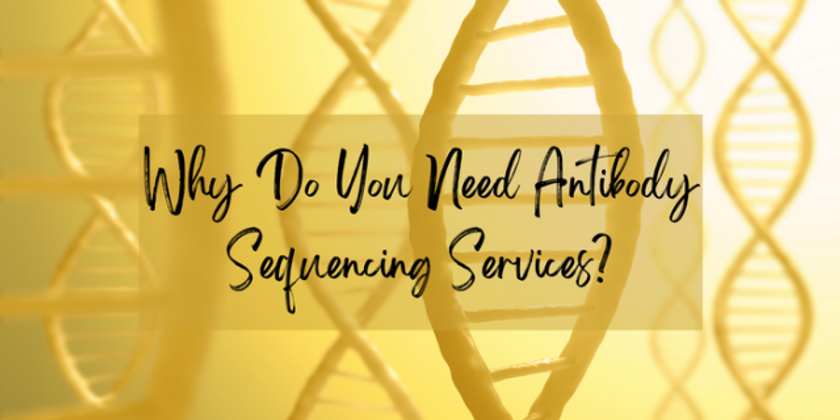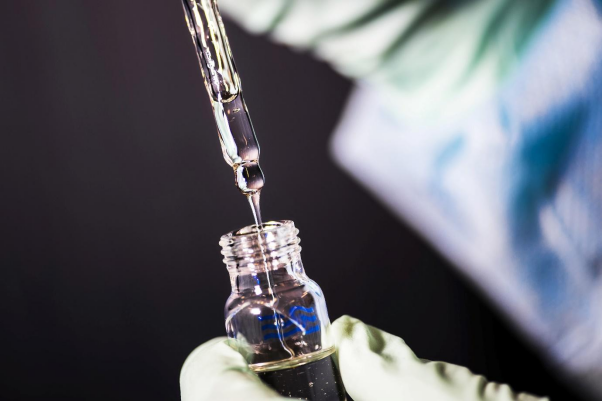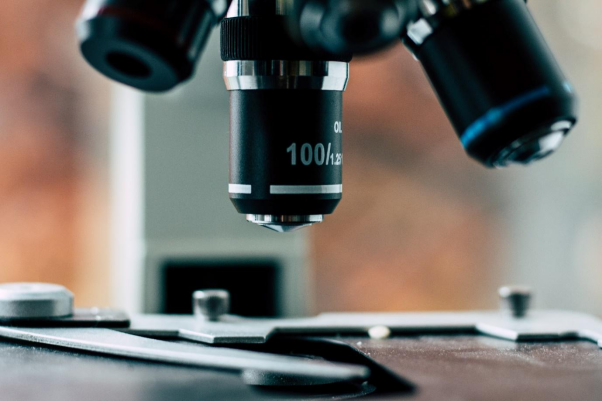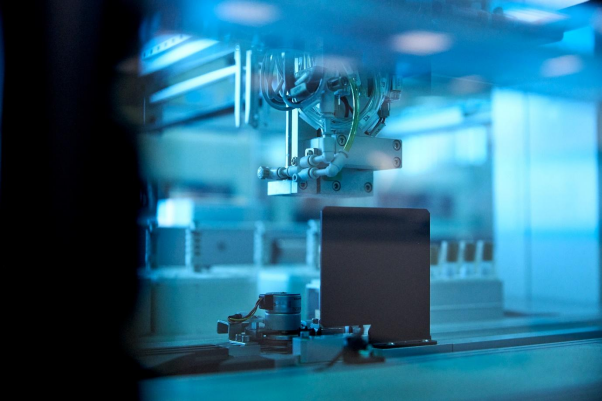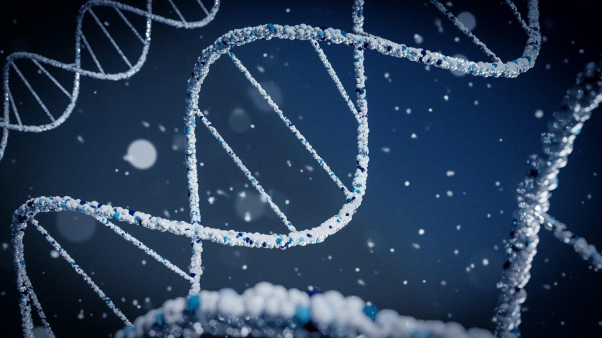Why Do You Need Antibody Sequencing Services?
Jul 7th 2022
Any antibody, whether polyclonal, hybridoma-generated monoclonal, recombinant, or humanized, can have its amino acid sequence determined through antibody sequencing services.
The pharmaceutical industry's development of antibodies benefits significantly from this use. Protein sequencing commonly uses mass spectrometry, which allows for end-to-end sequencing. This permits sequencing without knowing the DNA sequence and guarantees a high level of accuracy.
Contaminated or conjugated antibodies can also be sequenced using antibody production services; de novo methods with reasonably accurate results. Significantly, it is possible to retrieve complete sequences for heavy and light chains and any peculiar outcomes that might arise. Hybridoma sequencing may be available through some services. Below we are going to discuss the reasons why we need antibody sequencing services.
Benefits of Antibody Sequencing
Reproduction of an Antibody Without the Producer Cell: Recombination can still manufacture a specific antibody even if the hybridoma that produced it is lost or unavailable. All that is needed is 0.2 mg of monoclonal antibody protein. Other methods might still be feasible if even this is lacking.
End-To-End Sequencing of an Antibody: Thanks to high-resolution mass spectrometry techniques with optimal settings and proprietary software for de novo sequencing, the total protein may be sequenced from the n-term to the c-term comprising every amino acid.
Unsurpassed Accuracy: Each amino acid in the sequence is accurately visible thanks to the strong signal peak signatures generated from numerous mass spectrometry measurements of unique peptides.
Range of Applications: Except for humans, all animal species, including mice, rats, rabbits, and hamsters, can be sequenced using mass spectrometry, including IgA, IgM, IgG, IgY, Fab, ScFv, and so on. This approach is for sequencing antibodies with unique light chains in a pair and antibodies that have been polluted or conjugated.
The Pursuit of Perfection: Perfect mass spectrometric protein sequencing is the technology's goal. This has resulted in ongoing attempts to develop an efficient workflow and software that would enable the sequencing of every protein, regardless of how challenging it may be, while maintaining the highest levels of quality.
Report Everything: The use of antibody de novo sequencing has frequently resulted in the discovery of novel glycosylation sites on protein molecules or unexpected changes in sequencing that custom DNA synthesis has overlooked.
High Throughput: With just one or hundreds of antibody molecules awaiting sequencing, the mass spectrometry approach to de novo antibody sequencing is helpful.
Understanding Antibodies
Antibodies are immune system proteins that can bind to particular antigens and take the form of folded polypeptides or strands of amino acids that include pathogen target sequences. The body's immune system uses B-lymphocytes to make antibodies, which travel throughout the lymphatic and circulatory systems, attach to their target antigens, and then remove them from the bloodstream.
However, researchers cannot create molecular recognition tools with exceptional specificity. Due to several essential qualities, such as their high specificity, antibodies are particularly well adapted to serve as probes.
Custom polyclonal
For custom polyclonal, an antigen obtained from a goat, rat, mouse, and chicken is made in 80 days. Rabbits are preferred in the bespoke polyclonal production procedure because they consistently produce superior and high-affinity antibodies from their antisera.
Additionally, using rabbits is economical. Rabbits create more antibodies than other animals due to their robust immune systems. However, rats and mice are strongly favored when processing a tiny amount of antiserum. Goats make a lot of antibodies, but they react to antigens less frequently.
Custom Antibody Production
The specificity of antibody-antigen recognition has many applications in biotechnology and biosensor development. These applications necessitate extremely pure antibody supplies. Antigens are commonly used with tagged detection platforms or connected to sensor surfaces to detect antigens. Significantly, there are new, antigen-specific antibodies that can be purchased commercially.
Depending on how they are created and extracted, categorizing these custom antibodies may be polyclonal or monoclonal antibodies. Polyclonal antibodies can also recognize a variety of epitopes or places on an antigen. Monoclonal antibodies only retain one antigen epitope and are associated with a particular B-cell line.
The body can naturally make antibodies or be created expressly for a given need. A 4 mg immunogen can help custom antibody services with the high purity levels necessary.
Antibody Purification
Antibodies are being exploited as sensor substrates and cleaning ligands, revolutionizing bioresearch and diagnostic technology. Animals that have antigens develop antibodies specific to those antigens. The antibodies can now be used in research projects to identify recombinant protein production or the target antigen proteins using ELISA test kits, Western blot analysis, the E.Coli protein expression system, and various other methods after purifying. From very basic to highly specific, you can use the following categories to categorize custom protein expression and purification services:
- The antigen-specific affinity removes all antigen-binding antibodies regardless of antibody class or isotype.
- A subset of
- The sample protein is used to separate the immunoglobulins.
- On solid surfaces
- Abiotic ligands bind to specific antibody subtypes.
Labeling and immobilization of antibodies
You can also change them to meet the needs of a specific investigation. Labeled antibodies are necessary for many immunological techniques and the creation of numerous compounds to make antibody labeling possible. Utilizing procedures for latching or impeding antibodies to the chromatographic media is how affinity cleansing techniques leverage antibody specificity. The methods and chemical systems are identical to those used in antibody labeling. The molecular orbitals of an antibody must be determined to choose the best method for modification, whether it be labeling, crosslinking, or covalent immobilization.
Antibody fragmentation
Antibody fragments are a compact, straightforward construct that has gained popularity recently due to their many benefits over employing entire antibodies. While most immunoassay procedures can use whole antibodies, other approaches perform better using antibody fragments like Fab (Antigen-binding fragments). Antigen-binding fragments are available in a variety of sizes and forms. CS2 (carbon disulfide) bonds link them to protect the antibody's point of attachment, yet they inevitably contain at least some unstable regions of both immunoglobulin chains.
Due to the low demand for any given product, supplying primary antibodies as finished commodities is rare; as a result, each lab must rely on its supply of the antibodies.
Antibody characterization
After protein expression, antibody characterization is essential, particularly in the creation and research of biopharmaceuticals. All therapeutic custom protein production created using the existing techniques incorporate gene synthesis in the finished product since various modifications occur during different synthesis processes. These heterogeneities necessitate thorough study for reproducible and secure medicinal protein production services.
A straightforward Western analysis may determine the binding affinities of monoclonal and polyclonal antibodies. It is possible to monitor the antibody's relative specificity for the target protein. However, you can use nanoliter-sized volumes of material for clonal antibody screening. It is possible to monitor the antibody's relative specificity for the target protein.
Research investigations provide researchers with the knowledge to select and continue using specific solvents plus additional compounds in applications and how to wash the antibody correctly.
- You can use screening to find antibody samples with antigen-binding specificity.
- Tittering is a method for determining antibody concentration and how well a functional test works.
- A monoclonal antibody's class and subclass are determined through the procedure of isotyping.
The Science Behind Antibody Sequencing
An isolated polypeptide, often known as glutamate, is a linearly structured sequence of amino acids. The hydroxyl (C) end constantly affects a protein's fundamental structure's carboxylate (N) end. Depending on the approach, peptide synthesis services can be sequenced or inferred from its DNA chronology. Protein sequencing is the process of detecting and researching the fatty acid phylogeny of proteins.
Edman Degradation
A single molecule from the carboxyl end of the protein chain is eliminated during the Edman degradation process to purify proteins. To overcome the challenge of hydrolyzing conditions that were harmful to the protein's functionality, Pehr Edman created a novel technique for flagging and splicing polypeptide. Edman came up with a method to keep the rest of a sequence intact while deleting just one residue from it. By combining a hydroxy molecule with the N-terminal of another phenylthiocarbamoyl derivative, they created a phenylthiocarbamoyl derivative. A circular polymer of phenylthiohydantoin Glp-1 acid forms when the N-terminal cleaves under less acidic conditions.
Protein Sequencing techniques
You can use two tried-and-true methods or solid phase peptide synthesis protocol to determine the amino acid sequences of proteins. Mass spectrometry has become a popular strategy in recent years due to its ease of usage. When the protein's N-terminus needs to be determined, the second method, Edman degradation utilizing a polypeptide sequencer makes sense.
Single-molecule Protein Sequencing
In one of the most current speculative protein sequencing methods, you can use A TIRF chamber to fix peptides after covalently tagging them with fluorochromes for amino acids. You can photograph each peptide using TIRF technology. Another shorter polypeptide with a revived free N terminus result from Edman breakdown, releasing the N-amino acid with chemicals.
Significantly, a series of chemical reactions reveals fluorescent dyes' positions inside each molecule. Large numbers of a particular polypeptide may be evaluated simultaneously at suitable attachment densities, according to the results obtained for approximately 3 million biomolecules in the 6.5 mm2 sections of the coverslip.
In the future, obtaining additional images with high precision of up to 19 nanometers will be feasible. In single-molecule localization microscopy, the location of other molecules is by using the center position of a single-image molecule that has been located more precisely than the size of the image. On the other hand, it is still challenging to obtain the same level of precision in the orthogonal (3rd) plane of reality.
When utilizing a TIRF microscope, one can utilize a photometric method to identify the axial location of certain molecules. Utilizing it can help enhance three-dimensional images' appearance by using nanometric precision that is almost identical in all directions.
Almost all experiments need a standard TIRF SMLM microscope. Due to 3-dimensional fluorophore nanoscopy's accessibility to a wide variety of users, a new age of research into the dynamics of intracellular characteristics and protein-protein interactions has begun.
Mass Spectrometry
Bulk spectroscopy is a well-accepted proteomic method for protein decoding and is becoming increasingly common. Thin-layer chromatography can separate peptides when enzymes and other chemicals break down proteins. Then, each fraction containing ten distinct peptides is examined using a collision-activated dissociation automated multi-analyzer machine. It is simple to obtain the study findings on soluble polypeptides produced by glucan Bromo and protease preparation of low-density lipoprotein B, as well as the interpretation of the latency dissociation mass spectra.
Importance of custom antibody production
Creating unique antibodies is crucial when working with a rare antigen. Significantly, creating the hybridoma sequencing that you can store for later use. As a result, creating bespoke antibodies might save a lot of time when some components are already reserved.
Selecting the right:
Production number: First, researchers select the best species to increase the production of antibodies that resemble humans. Researchers collect a broad sample of antigens based on the expected number of antibodies.
Production animals: Because their antibody isotypes approximate those of humans, there is a favor for rats, mice, and goats over other species. The age and health of the animal should be considered by the researchers while choosing a subject. Because of their weak immune systems, you should generally avoid young animals, and older animals might not produce the best outcomes.
Pre-clinic and clinic trials: Trials ensure that antibody protein sequencing services successfully block antigens. Pre-trials assist physicians in determining an antibody's potential effects on people.
Antibodies varieties
The development and delivery times of various antibodies vary. For instance, polyclonal antibodies can take 7–12 weeks to develop, depending on the antigen sequence. You can examine the protein using an algorithmic method to determine the correct structure. Delivery of monoclonal antibodies to a research team can take three to five months. The algorithm can also determine the ideal combination based on the desired outcome in this process. You can create a monoclonal antibody by combining the protein antigen and peptide.
Bottomline
Purchasing a technology vendor is one choice available to pharma companies. Outsourcing antibodies may be financially advantageous if a biomedical company purchases in-compounds later in the development phase rather than immediately challenging an unidentified result.
On the other hand, outsourcing has disadvantages as well. While disbanding internal R&D teams could degrade a company's knowledge base. Also, outsourcing management can become so complex that it negates extra cost benefits. Therefore, it's crucial to consider how to choose the ideal spouse.

